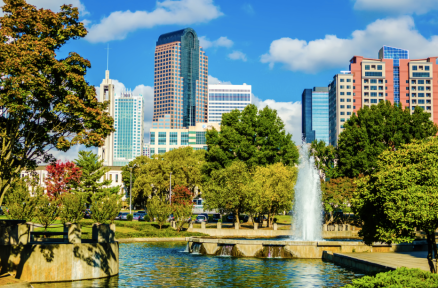It Isn’t Easy Being Green (But Can It Be?)
Urban development and growth are on the rise. According to the World Health Organization, more than half of the world’s population lives in a city. By 2070, they predict that this amount will increase to 70%. Some people see this as a kiss of death to the environment. They associate cities with smog, consumption, and a fast-paced, destructive lifestyle. Others believe that urban development is the only way to save the environment. In his article “Urban Sustainability Isn’t About Green Gizmos,” Ben Hurley calls people out for considering themselves “greenies” even though they refuse to support high-density living. These “greenies,” he says, become upset when development takes place in locations they consider extensions of their backyards. What they don’t realize is that condensed living spaces lead to more available space for agriculture, gardens, and parks.
But when the population continues to grow, as it is expected to, how can we ensure cities keep their green spaces? We can use legal methods to protect those spaces that already exist. But if we are to keep green space proportionate to a city’s population, as Jeff Angel recommends in his list of Sustainable City Practices, we must find a way to create new spaces as well. This idea comes with its own set of problems. How do we find enough space to turn into a park or a garden in an already established city? How do we make spaces easily accessible, so that people don’t have to drive to them (therefore defeating the purpose of having a green space in the first place)? Should green spaces be located within the city, or on its fringes as to make the city as compact and efficient as possible? Is it okay to deny people the privilege (or right, to some) of having a private backyard? Will suburb-dwellers be willing to make such a huge lifestyle change for the sake of the environment?
Even if we found a foolproof solution to preserving and creating green space in cities, common misconceptions of “green living” might prevent people from doing so. As David Owen points out in his article Green Manhattan, most people think of rural or suburban living as the most green. In fact, those lifestyles cause more water and energy waste in addition to more greenhouse gas emissions than an urban lifestyle does. But until we can get more people to recognize this seemingly paradoxical fact, cities will have a harder time gaining enough support to build high-density housing and preserve their green spaces. People will want to keep their own backyards and gardens, commonly because they believe those gardens make them “green,” but we must convince them otherwise. It will not solve all of our problems. We will still pollute and waste our resources, even in high-density cities. But it’s a start. The future of the environment depends on us.


I really liked this presentation because it made me reconsider how cities can provide more environmentally friendly lifestyles. Public transportation is so much more efficient than car pools even are.
I like the idea of green species via urban environments. Farming in skyscrapers and rooftop gardens are an interesting alternative. Central Park is a great addition to the ecosystem in New York City, but it is not enough to sustain US as a human population that needs good food, healthy living conditions, and Oxygen!
Growing up a New York City resident, I agree with David Owen’s point. We have to really educate more people about the “greenness” cities like Manhattan provide. I also thought Owen’s argument would have been stronger if he practiced what he preached.